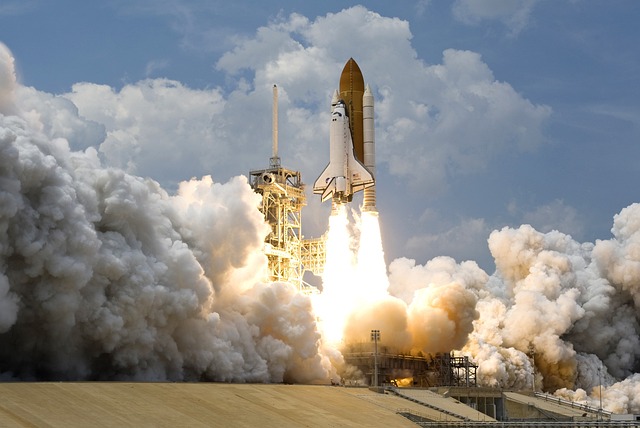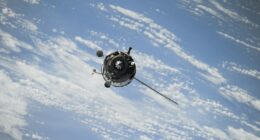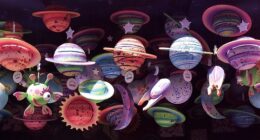A rocket is a general term for a spacecraft propulsion system, while a space shuttle refers specifically to a reusable spacecraft for crew transport.
TL;DR Rocket Vs. Space shuttle
Rockets are powerful vehicles that use propulsion systems to generate thrust, enabling them to reach escape velocity and break free from Earth’s gravitational pull. They are typically used for one-time missions and cannot be reused. Rockets have been instrumental in launching satellites into orbit, exploring other planets, and even sending humans to the moon.
On the other hand, space shuttles were a type of reusable spacecraft used by NASA from 1981 to 2011. They featured a unique design with orbiter vehicles riding on top of large external fuel tanks and solid rocket boosters. These shuttles could carry both crew members and cargo into space before returning safely back to Earth like an airplane landing on a runway.
What is a Rocket?
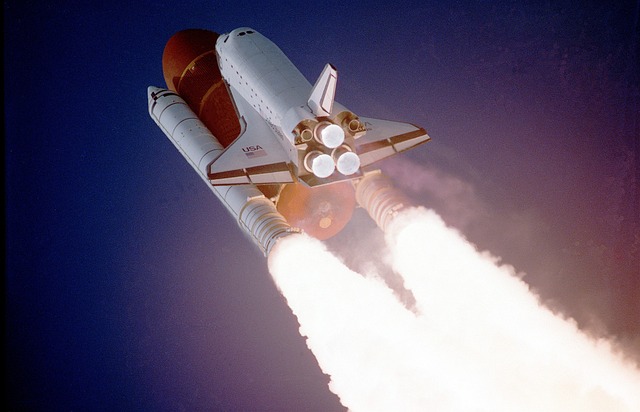
A rocket is a vehicle or device designed to propel itself through space by expelling exhaust gases in one direction, following Newton’s third law of motion, “for every action, there is an equal and opposite reaction.
” Rockets can vary in size, from small models used in fireworks to colossal vehicles like those used in space exploration. They consist of a propulsion system, typically a combustion engine, a fuel source, and guidance systems.
Rockets have been instrumental in enabling human space exploration, satellite deployment, and interplanetary missions due to their ability to operate in the vacuum of space and overcome Earth’s gravity.
What is a space Shuttle?
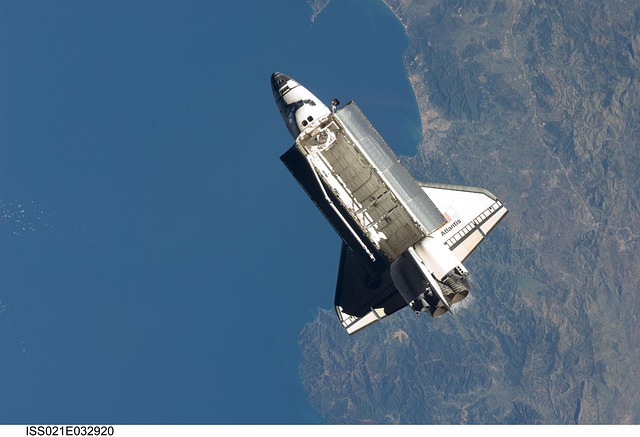
A space shuttle is a reusable spacecraft designed for human spaceflight missions. It combines an orbiter, solid rocket boosters, and an external fuel tank.
The orbiter is the crew compartment, capable of carrying astronauts and cargo into space. Space shuttles were used by NASA from 1981 to 2011 for various missions, including satellite deployment, scientific research, and assembly of the International Space Station (ISS).
They were known for their ability to return to Earth like a glider, enabling reusability. While they offered versatility and efficiency, they were eventually retired due to high operational costs and safety concerns, leading to the development of new spacecraft.
Rocket Vs. Space shuttle – Key differences
| Aspect | Rocket | Space Shuttle |
|---|---|---|
| Purpose | General term for spacecraft propulsion. | Specific type of reusable crewed spacecraft. |
| Reusability | Varies; some rockets are expendable. | Designed for multiple missions; reusable. |
| Structure | May have different configurations, e.g., single-stage or multi-stage. | Consists of an orbiter, solid rocket boosters, and an external fuel tank. |
| Crew Capability | Not designed for human crews in most cases. | Designed for carrying astronauts and cargo. |
| Launch and Return | Typically launched and not recovered. | Launches like a rocket and returns like a glider. |
| Historical Usage | Used for various purposes, including satellite deployment and exploration. | Used by NASA for human spaceflight missions (1981-2011). |
| Notable Example | Falcon 9 by SpaceX | Space Shuttle (e.g., Atlantis, Discovery) |
History of Rocket and Space Shuttle
History of Rockets
- Ancient Origins: The history of rockets dates back over a thousand years, with ancient Chinese inventing gunpowder-propelled rockets for military use around the 9th century.
- 17th-19th Centuries: Rocket technology evolved in Europe, notably with the work of Konstantin Tsiolkovsky and Robert Goddard, who laid the foundations for modern rocketry.
- World War II: Both the Axis and Allies used rockets in military applications during WWII, leading to the development of more advanced rocket technology.
- Space Age: The launch of Sputnik 1 by the Soviet Union in 1957 marked the beginning of the space age. The U.S. followed with Explorer 1 in 1958.
- Apollo Program: NASA’s Apollo program achieved the first human Moon landing in 1969 using the Saturn V rocket.
- Space Exploration: Rockets have since been instrumental in space exploration, satellite deployment, and interplanetary missions.
History of Space Shuttles
- Conceptualization: The idea of a reusable spaceplane was proposed in the 1960s. NASA began studying the concept of a space shuttle in the late 1960s.
- Development: The Space Shuttle program officially began in 1972. The first orbiter, Columbia, was completed in 1979.
- Maiden Flight: The Space Shuttle Columbia launched on its maiden flight, STS-1, on April 12, 1981.
- Operations: Over the next three decades, the Space Shuttle fleet (Columbia, Challenger, Discovery, Atlantis, and Endeavour) conducted numerous missions, including deploying satellites, conducting experiments, and assembling the International Space Station (ISS).
- Retirement: Due to high operational costs and safety concerns following the Challenger and Columbia disasters, the Space Shuttle program was retired in 2011 with the final flight of Atlantis (STS-135).
- Legacy: The Space Shuttle program left a significant legacy in human spaceflight, making space more accessible and contributing to scientific research.
Rockets have a long history dating back to ancient times, while the Space Shuttle program was a more recent chapter in space exploration, emphasizing reusability and human spaceflight capabilities.
Rocket Vs. Space shuttle – Components and Design Differences
Rocket
- Propulsion System: Rockets are primarily propulsion systems. They have engines designed to expel exhaust gases at high speeds, providing the necessary thrust for propulsion.
- Payload: Rockets can carry various payloads, such as satellites, scientific instruments, or spacecraft. The payload is typically placed on top of the rocket.
- Staging: Many rockets are multi-stage, where lower stages are jettisoned once their fuel is depleted. This reduces the weight of the vehicle as it ascends.
- Reusability: Rockets are often expendable, meaning they are not designed for reuse. Some newer rockets, like SpaceX’s Falcon 9, are partially reusable.
Space Shuttle
- Orbiter: The space shuttle consists of the orbiter, which is the crew compartment. It can carry astronauts, cargo, and scientific equipment. The orbiter resembles an airplane.
- Solid Rocket Boosters: Space shuttles use two solid rocket boosters (SRBs) attached to the sides for additional thrust during liftoff.
- External Fuel Tank: A large external fuel tank is used to supply fuel to the orbiter’s main engines during launch. It is jettisoned once empty.
- Wings and Landing Gear: Space shuttles have wings and landing gear, allowing them to glide back to Earth for runway landings.
- Reusability: Space shuttles are designed for reusability, with the orbiter being refurbished and flown on multiple missions.
- Human Crew: Space shuttles are crewed spacecraft designed to carry astronauts to and from space, conduct experiments, and perform missions such as satellite repair and space station assembly.
Rockets are primarily propulsion systems used to launch payloads into space, while space shuttles are complex, reusable spacecraft designed for human spaceflight missions with distinct components such as the orbiter, SRBs, and external fuel tank.
Image Credits
Featured Image By – WikiImages from Pixabay
Image 1 By – NASA-Imagery from Pixabay
Image 2 By – NASA-Imagery from Pixabay
